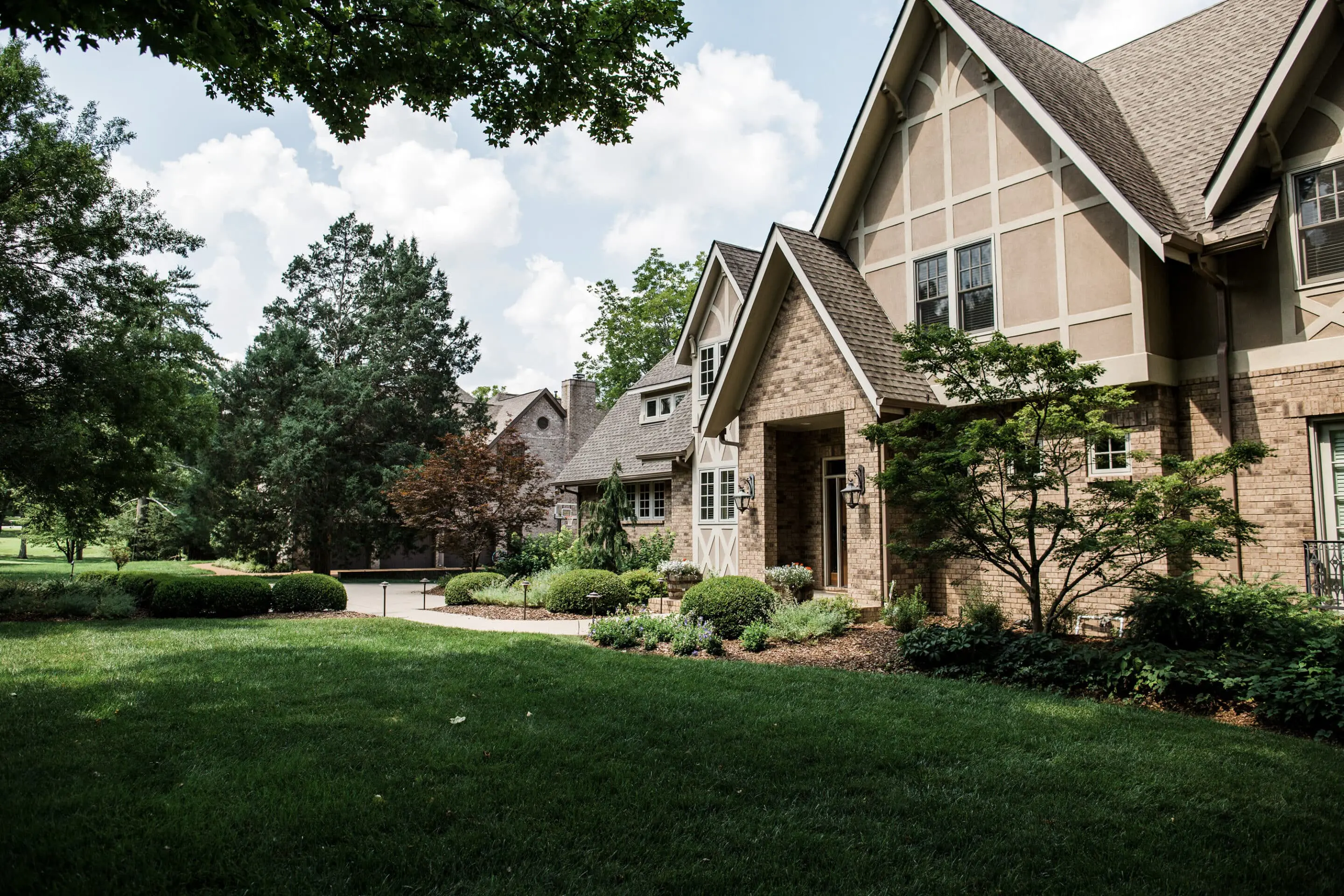–
Spring has officially sprung, which means warmer weather, longer days, and more time in the garden! What’s the next step for your landscaping? Need some landscaping tips? Check out these easy ways to get your yard in shape:

- Re-seed the damaged or bare areas of the lawn: If your lawn has areas that are damaged or bare, it’s essential to reseed them to promote healthy grass growth and maintain an even appearance. Start by preparing the soil in these areas by loosening it with a rake or garden fork. Then, spread grass seed evenly over the prepared soil, making sure to choose a seed variety appropriate for your climate and soil conditions. Lightly rake the seed into the soil, water thoroughly, and keep the area consistently moist until the new grass establishes itself.
- Mow established cool-season turf grasses weekly or as needed; raise mower height to three to four inches: Regular mowing is crucial for maintaining healthy turf grass. For cool-season grasses, such as fescue or Kentucky bluegrass, mow weekly or as needed to keep the lawn at an optimal height of three to four inches. Adjusting your mower height helps promote deeper root growth and improves the lawn’s ability to withstand drought and stress.

- Contact us for a quote on lawn care. We can help by first completing a soil test to find out the actual composition of your soil: If you’re unsure about the condition of your lawn or need assistance in improving its health, consider reaching out to us for professional lawn care services. We can start by conducting a soil test to assess the pH level and nutrient content of your soil. This information allows us to tailor a lawn care plan specific to your lawn’s needs, ensuring optimal growth and vitality.
- Replace or refresh mulch around plants: Mulch plays a vital role in conserving soil moisture, suppressing weeds, and insulating plant roots. If your existing mulch has begun to break down or thin out, it’s time to replace or refresh it. Remove any old mulch and weeds from around your plants, then apply a fresh layer of mulch to maintain a depth of two to four inches. Choose a mulch material that complements your landscape and provides the benefits your plants need.

- Prune spring-blooming shrubs and vines after they finish flowering: Proper pruning is essential for maintaining the health and appearance of spring-blooming shrubs and vines. Wait until after they finish flowering to prune, as this allows you to enjoy their blooms and ensures they have ample time to set buds for next year. Remove any dead or damaged branches, as well as any crossed or crowded growth, to promote better air circulation and overall plant health. If you would like our help, our team can do a seasonal clean-up for you!
- Plant ground covers and warm-season annuals and perennials as soil temperatures warm and the danger of frost has passed: As spring progresses and soil temperatures rise, it’s time to plant ground covers, warm-season annuals, and perennials in your garden beds and borders. Choose plants that thrive in your local climate and soil conditions, and be mindful of the last frost date in your area to avoid any potential damage to tender plants. You can find all your gardening needs at our garden center!
- Check roses, ornamentals, and vegetables for powdery mildew, prevalent in mild, moist spring weather: Powdery mildew is a common fungal disease that can affect roses, ornamental plants, and vegetables, especially in mild, moist spring weather. Keep an eye out for white, powdery spots on the leaves and stems of your plants, as well as any distorted growth or yellowing foliage. If you notice signs of powdery mildew, promptly remove and dispose of affected plant parts, and consider applying a fungicidal treatment to prevent further spread.
- Check new growth on ornamental plants weekly for aphids and scale insects and treat with a natural pesticide, if necessary: New growth on ornamental plants is particularly vulnerable to infestations of aphids and scale insects, which can quickly multiply and damage your plants. Inspect your plants regularly for signs of these pests, such as clusters of small, soft-bodied insects or sticky, honeydew-like residue. If necessary, treat affected plants with a natural pesticide to control the infestation and protect your plants’ health.

- Water all your plants when they’re dry, but be particularly diligent with new plantings that can quickly dry out in our persistent spring winds: Adequate water is essential for the health and vitality of your plants, especially during the dry spring months. Water your plants deeply and thoroughly when the soil is dry to the touch, ensuring that water reaches the root zone where it’s needed most. Pay special attention to new plantings, which may be more susceptible to drying out in windy conditions. Consider using mulch to help retain soil moisture and reduce water evaporation.
- Start up and test your irrigation system: Before the heat of summer sets in, it’s important to start up and test your irrigation system to ensure it’s functioning properly. Check for any leaks, clogs, or damaged components, and make any necessary repairs or adjustments. Adjust your irrigation schedule as needed to provide adequate water to your plants while minimizing waste. Regular maintenance of your irrigation system helps ensure efficient water usage and promotes healthy plant growth throughout the growing season.
Hopefully these landscaping tips were helpful to get you started this spring. To begin your next project, schedule a phone consultation! We would love to work with you on bringing your vision to a reality. If you would like to work with your existing designer, simply fill in their name in the “Project Details” section.





